|
BY SWAR
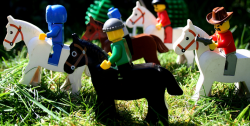
Now Derby day for me usually consists
of me turning on the TV and
realizing it's been over for hours. The other thing that happens, is
stoically sitting through all the pre-race brouhaha and turning my back
for a moment and missing the entire race. This time I was determined to
actually see the darn thing.
Hats, hats, hats. Yes the famous
Kentucky Derby Hat phenomena. I can't say I am a hat fan. I mean they
blow off in the wind, the big ones obscure your vision and poke out the
eyes of your "closest" friends. Some may have found Paris Hilton's
quest for the perfect hat, and dress to match fascinating but alas I
found myself growing restless and wondering if I had time to wallpaper
the bathroom. I did see one spectacular hat. I wouldn't have minded
having that sucker strapped to my head if I were on board a crashing
plane as it was undoubtedly capable of saving my life. Never mind that
is was blazing fuchsia. Clearly, I wouldn't be caught dead in that one!
Hooray for Derby hats.
On and on we went, back story after
back
story, favorites scratching, track sloppy. Old man McCarthy with his
one faithful horse. Bob Baffert trying to act humble. Pletcher with his
three horses and no Derby wins. Guess entering three might help. D.
Wayne Lucas, never given even a glance by the media. Woolley, with his
20 hour drive and busted up leg. Oh there's another hat. Slowly, ever
so slowly I began slumping into my couch. Eventually I became quite
horizontal.
I have to admit, I have not really
been following
the races this past year or so. I depended utterly on the media, and I
know better, for my picks. Between naps I compiled my picks,
disregarding the top three they were raving about, Dunkirk, Friesan
Fire, and Pioneerof the Nile. Ok well I did take Pioneer as my second
choice, but I succumbed instantly to the sentimental story of the day
and picked General Quarters for the win. Nice guys don't always finish
last, sometimes they finish in the middle. So now I was all set, if
they would just hurry up before I fell asleep.
I perked up when
I heard the sounds of LeAnn Rhymes singing the National Anthem. She had
removed her hat for the performance. Possibly for acoustic reasons. It
was not a bad version, but not spectacular either. What I would give to
hear Susan Boyle perform that! No offense LeAnn. Moments later the
fella with his horn began tooting!
To the Gate! Nineteen horses
loaded in. Naturally they broke in a sea of browns, and all I could see
was that one jockey wearing bright pink. Sadly as they sorted
themselves out, my favorite was nowhere to be seen. He never did show
up either. Mine that Bird is meanwhile, in last place. He is proving
perfectly, what every handicapper has said about him. He is outclassed
and just too slow. Yep last place, right where he should be. Pioneerof
the Nile is up there looking good, waiting for his charge for the
finish. Dunkirk is way back too, having stumbled early and never doing
much after. Friesan Fire? Who? Mine that Bird is so far back that it
take a bit to notice that he is coming. And coming with the vengeance
of a runaway freight train. When he finally gets in camera view he is
mid pack and moving at such speed that the rest of the field appears to
be on a Sunday drive. Borel stuffs him through a small hole on the rail
and it's all over. He blows past everyone like they are standing still.
Too slow eh? I forgive General Quarters for losing since Mine that Bird
left some serious egg on the faces of the big boys.
So why 50-1?
Handicappers had nothing good to say about him. Too slow. Outclassed.
Never heard of his trainer. Why is Borel riding one of the worst horses
in the Derby? Borel has placed in the top three of 39% of his starts
this year. I dunno about you but I like to pick winners by whose riding
them. I figure they like to get paid and should have a clue about what
they are riding. This year I was lulled completely by the media and did
not do my research. So who knows, fluke or sleeper? I guess we find out
when the Preakness runs.
Finally, and my second favorite part
of
the show, was Mine that Bird's trainer being interviewed after the
race. Woolley was quite grumpy and very brusquely told the reporter
that maybe everyone would stop talking about his 20 hour drive now,
then turned his back on him and walked off. The camera cut away to the
main announcers and they promptly began to talk about his 20 hour drive
again... |
 BY
JNFERRIGNO
BY
JNFERRIGNO
For me, the best dog breed Africa has
to offer is the Azawakh
sighthound. A beautiful well defined chiseled piece of canine
perfection on top of four elegantly long legs....yeah. I’m
not biased.
The
Azawakh is considered a Pariah Dog, or primitive dog, from Sub-Saharan
Africa. They are closest to the Sloughi, and other arabesque dogs of
the Middle East (including parts of Northern Africa). Due to the harsh
climate which surrounds their native area, the Azawakh has been
genetically isolated from other breeds for over a millennia. In their
home lands, they are not bred in a modern sense, however the Azawakh is
a unique strain of Sahel dog, also known as Bush dog. Studies have
shown the presence of GPI^B in the Azawakh. GPI^B is a rare allele that
is only present in foxes, jackels, Italian wolves, and Sloughi dogs.
It’s presence suggests that the Azawakh is closely related to
wolves,
or even from a cross-breeding of African canids like jackals.
Archaeological
studies have found art work dating back 10,000 years which closely
resembles the Azawakh today. This period was known as the Holocene Wet
Phase and Neolithic Subpluvial, or simply put Green Sahara. These
depictions show coursing dogs, teamed with hunters. And when
settlements of the Sahara were unburied, archaeologists found dog bones
which resembled the Azawakh as well.
Around this time, the
Sahara wasn’t a desert like it is now. Prior to 7000 BC the
climate of
North Africa was very dry. This was followed by a 4,000 year wet spell.
And during 3000 BC the territory began to dry up again. This climate
change suggests that the Azawakh population has a unique genetic
heritage brought on by the fact that the Saharan terrain was not
crossable, and acted as a natural barrier.
This kept them
completely isolated from northern dogs, but the ties to the southern
bush dogs are very close. They are suspicious by nature which ties into
their very strong guarding instinct. Like other wild dogs, they have a
complex social hierarchy, unique vocalizations, and a very strong
instinct to dig dens to live in.
France is the recognized
patron country for the Azawakh, however the Sahel (western Africa) is
it’s motherland, so breeding practices are completely
different between
the two countries. The people of the Sahel do not practice selective
breeding, and unlike the Bedouin they do not believe in separating
noble from mongrel dogs. Instead their approach to selection is based
on a very hard to explain aesthetic factor. On top of the natural
selection that the intense Sahel environment provides, the nomadic
people will decide which pups will live from a breeding. The Sahel
control the female lines, and the alpha male of the local population is
usually the sire. Unless it’s a rather wet year, one pup is
usually
selected to live. Unless more dogs are needed in the future, the
females are usually culled at birth.
Color is not important to
the people of the Sahel, however the dominant Azawakh colors are
typically reds and fawns. They also come in grizzle, brindle, brown,
grey, white, blue, and black which is more rarely seen. They can have a
black mask or not, and are commonly seen with white markings, although
the rare solid dog pops up. In the Sahel they are usually heavily
marked with white, and while all other registries allow for excess
white and piebald markings which commonly occur in the breed, the FCI
(Fédération Cynologique Internationale) faults
for that. There has been
many petitions to have the rules changed, but for now the only white
which is allowed must only be on the tip of the tail, a bib on the
neck, and white on all four legs which cannot pass the elbow.
Additionally if a dog lacks colors on their legs, they
|
are
faulted as
well.
The Azawakhs health is incredibly
sound. Breeders have
not found any instances of hip dysplasia, and the dogs are considered a
very healthy coursing hound. Wobbler disease has rarely popped up in
the breed, but only in dogs taken off of a natural diet. Many of the
western dog foods are to high in protein, and as a result cause the
pups to grow to quickly. Like other bush dogs, the Azawakh goes into
heat once a year, and can have a litter of pups from 1 to 8, but 4 to 6
is the norm.
The Azawakh is a pack animal; this
makes them
very social and emotional. They do best with other Azawakhs for
companionship because of their unique social intelligence. The master
needs to be able to be firm but fair as well, since they will always
look to you for guidance. Unlike other sighthounds, the purpose of the
Azawakh is as a guardian dog. Because of their protective nature, they
develop an intense bond with their master. I think one of the reasons I
love this breed so much, is because they have a Gemini personality.
They can be very attentive one moment, and aloof the next, or they are
affectionate (some times overly!) and yet fierce when needed. They are
beautiful put together, and look elegant, almost frail, and yet they
are one of the more rugged coursing dogs out there. They are not
aggressive by nature, but are suspicious of new things, so when
bringing strangers into the home they will naturally want to keep their
distance and prefer not to be petted. But the owner is responsible to
make it clear when visitors are welcome, and when further protection is
no longer necessary. Even though they are raised to protect live stock,
they are not innately aggressive towards other dogs or humans unless
threatened, but they will vocally defend their homes. Like all dogs,
lifelong socialization and firm but gentle handling is critical in
raising a well socialized and trained dog to ensure they get along with
other dogs, cats, children, and strangers. They have a very good
memory, and will recognize the same dogs or friends after years have
passed.
This is a breed which is packed with a
huge amount of
energy and endurance. If you are a runner, you’ll want one of
these!
You won't need to go to the gym, because this dog will keep you active
with all the holes you will be filling. Yes, they are a digging breed!
They require a large area to run and play, and burn off some of that
steam. Heat does not bother these dogs, and they can handle weather
which would kill other canines. But they do not like rain and cold
weather, so make sure to bring them inside. Due to the social structure
they form, they do not do well in crates. They love to sleep with other
dogs, and often owners will come home to find a pile of them sleeping
on top of one another.
They are very rare in North America,
but
more popular in Europe. However their popularity seems to be growing as
the Azawakh begins to find more and more people who fall in love with
them. They are currently recognized by the AKC as Foundation Stock, so
they can participate in and AKC performance events. They can also be
registered with the UKC and ARBA (American Rare Breed Association), or
the more restrictive FCI. They can participate in any NOFCA (National
Open Field Coursing Association) and ASFA (American Sighthound Field
Association) coursing competitions. |
"I met this awesome
dog at
an adoption event. She's the perfect dog; my
dream dog, except she's deaf. She's a pit bull that loves dogs, loves
kids, loves people, and is smart. A Breed ambassador. Do you think it
would be a good idea?" - Airam
"I think it's amazing you are
thinking about adopting this dog. I had a deaf and later on partly
blind yellow lab. We had her trained (us trained too) by a professional
trainer. She was an amazing dog." - Fuangel29
"If trained
properly, deaf dogs respond just as well as non-deaf dogs. I've never
had an issue with mine being startled and as a result fear biting,
because she smells you or feels the vibration on the ground. She also
made a better watch dog then the others because her sight and smell
were heightened." - Bara of Celtic Rose
"They were bred to hunt
small game, so if a rabbit or squirrel crossed your path [when off the
leash], particularly with a dog that can't hear you calling (or in the
case of hearing terriers, chooses not to), you may never see the dog
again." - Kholran |
|
|
 BY KHOLRAN
BY KHOLRAN
For many,
the arrival of spring means flower blossoms and warmer days.
For animal lovers, it can mean the best time to add a new dog to the
family. With summer vacation rapidly approaching, many people see it as
the perfect time to devote warm days to training. There are many
avenues to take when considering a new dog, but one of the most
rewarding for those looking for a companion is to adopt a dog from the
local animal shelter.
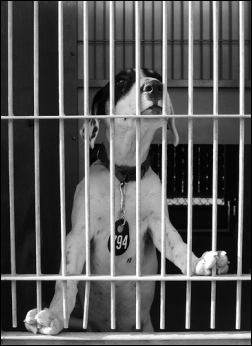 Why choose a shelter? Why choose a shelter?
Pet overpopulation is a significant problem in the
United States. It is
estimated that anywhere from 6-8 million animals arrive in US shelters
every year. Between three and four million are euthanized, many simply
because there are not enough homes. About half of all shelter dogs are
purebreds. By adopting a dog from the shelter, you save not only that
animal’s life, but you open up a kennel for another dog in
need of a
good home. In addition, the cost of adoption is often far less than
that of purchasing a dog from a pet store or breeder. In most cases,
shelter dogs are not only vaccinated and given a full physical
examination, but they are also spayed or neutered, and in some cases,
even micro chipped for identification. Shelters will usually perform
some sort of behavioral evaluation to ensure that the dogs are suitable
for adoption as well. Adoption fees are usually only a fraction of the
cost of each individual dog’s care, and far less than an
owner would
spend for the same care as an individual.
Okay, great, but I
really
like the look of a certain purebred.
Not only are around half of shelter animals
purebred dogs, there are
breed rescues all over the country. Breed rescues specialize in a
single breed, and often work with local shelters to put these dogs into
foster homes until they are adopted. You may not find the breed you
want in the shelter because they are all sent to breed rescue. Rescues
exist for almost every breed there is, from easy-to-find breeds like
Labs and Beagles, to less common breeds like Briards and Tibetan
terriers. If you aren’t planning on showing (which requires a
dog to be
registered and in-tact), but still want a purebred dog because you love
a certain breed, breed rescue is the way to go.
So what do I need to
consider?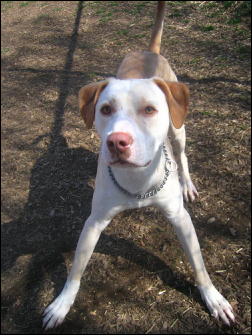
Adding a new pet to the home is a big decision,
even for owners who
have had many dogs before, and it should never be made quickly or
carelessly. There are a lot of things to consider, from whether you
have the time and money to properly care for a pet, to what your
existing pets will think of the new addition. Some of the most
important questions to ask yourself are:
*Do I have the time to
devote to a pet? An adult dog might be perfectly content to spend your
work hours home alone, but a puppy is going to require a far greater
time commitment. House breaking, training, and exercising all take a
great deal of time, so it is important to be absolutely sure that you
can devote the necessary care to your new dog.
*Can I afford a dog?
The average yearly care of owning a dog is between $1000 and $1200. Vet
bills and food are usually the largest regular costs, but there are
also things like grooming and training fees to consider. Be sure that
your financial situation allows for the additional costs of pet
ownership, including potential emergency situations.
*Why do I want
a dog in the first place? If you have to think about this question,
perhaps it’s not the best time to add a new pet to the home.
There are
many reasons people give for wanting a dog, from companionship to
security to needing an exercise partner. Some reasons are more
legitimate than others (“fashion accessory“ for
example, is not a good
reason to get a dog), so be sure that your reason for wanting an animal
is not “just a phase”.
*Is this the best time for me to get a
dog? If you are constantly traveling for work, planning to move in the
near future, have a very young child in the home, or otherwise have a
constantly changing environment, it may be a far better decision to
wait until things have stabilized. Moving into a new home is stressful
enough on a dog without having to deal with a constantly changing
environment.
*Is your home the right environment for a dog, and
are
you permitted to own one? Each individual dog has different needs. A
border collie is not going to be happy in an apartment, for example,
and an English bulldog doesn’t require acres to run. It is
important to
make sure you have the appropriate living arrangements for the type of
dog you are interested in before you bring it home. In addition, if you
live on a rental property, it is your landlord that will have the final
say.
*Am I prepared to give my dog a permanent home?
This is one of
the most important questions to ask. Pet ownership is a long term
commitment, and anyone looking to adopt a dog needs to be prepared for
that. In most cases, this is a commitment that will last 10-15 years.
Many shelter dogs are young adults whose owners didn’t
realize how much
time and energy it truly required.
*What kind of dog am I looking
for? Another very important question! Dogs are as diverse as people.
There are lazy dogs and energetic dogs, quiet dogs and loudmouthed
dogs, stubborn dogs and easy-going dogs, dogs that shed everywhere and
dogs with low-shedding coats. Even if you’re in the market
for a mutt,
it’s very important to do your breed research before you even
start
looking. After all, a mutt is likely to show traits of any and every
breed that makes up the mix, so it’s quite important to have
an
understanding of what those traits might be. One of the benefits of
going to a shelter is that staff is often very familiar with the dogs
in their care. They can advise potential owners of the dog’s
personality and needs, so that adopters don’t encounter any
surprises.
Making a list of which personality traits you can and cannot deal with
will help shelter workers match you with the best dog for your
household.
*What will my other pets think? Not only should
every
human member of the family have a say in which dog to get, existing
pets should be included in the decision too. Always introduce existing
dogs in the home to any potential new “siblings”
before you make the
final decision to adopt. If the animals don’t get along while
on the
shelter’s property, don’t expect things to improve
in the home; in
fact, they usually get worse, often leading to the new dog being
returned to the shelter or otherwise finding yet another new home. By
introducing them prior to adoption, you can usually avoid any major
conflicts of personality before they become a real problem in the home.
Also be sure to mention any other pets in the home, particularly cats
or rabbits. A dog with a strong prey instinct could be a potential
danger to small animals, so be certain that shelter staff is fully
aware of all animals in the home.
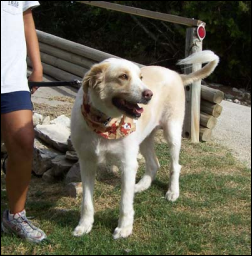 I have
good answers to all
those questions. What should I bring to the shelter? What can I expect? I have
good answers to all
those questions. What should I bring to the shelter? What can I expect?
Each shelter has a different adoption policy and
procedure.
It’s best
to call ahead and ask what you will need to bring with you. Most
shelters will require some form of photo ID to verify basic
information. If you rent your home or apartment, you may be asked to
provide a copy of your lease agreement, or a written statement from
your landlord, giving you permission to own a pet on the property. Of
course, you should bring everyone in the family who is going to be
living with the dog to ensure that all interaction is safe and
appropriate, particularly when there are children involved. Prior to
adoption, you will also want to bring any dogs already living in the
home, just to make sure they get along. Bringing cats to the shelter is
not a good idea, though! It is far too stressful on the average feline,
and while it is important to make sure the new dog is cat friendly,
that is best done using either a shelter resident intended for such a
purpose, or in a controlled home environment.
Most shelters have
some form of adoption application or questionnaire that you will be
asked to complete. These may ask questions similar to those listed
above to get a good idea of whether you are truly ready to add a new
dog to the family. They may ask for veterinary references to ensure
that you give your current pets proper care, so be sure to bring the
phone number of your vet if you do not have it memorized. Some examples
of applications can be found here, to give you an idea of what to
expect: Animal
Friends, Pittsburgh, PA and ASPCA,
New York City, NY.
Once you find a few potential candidates, make
sure the adoption staff
goes over any and all information they may have on the dogs. Most
shelters will keep a record of why the animal was surrendered, how it
performed on the behavioral assessment and if there are any areas that
need work, and any relevant medical findings during the health check.
Spend as much time as you can getting to know the dog, and if possible,
spend that time in different environments. You may be able to take the
dog on a walk to see how he or she responds on a leash, or spend time
in a play area to make sure the dog’s energy level matches
your own. Be
sure to get as accurate a picture of the dog as you can before making
any final decisions.
Some shelters will expect you to take your new
dog home the same day you choose to adopt him or her. Other shelters
have a period of time that you must wait after you have chosen a dog.
If there is a waiting period, the dog is generally spayed or neutered
in that time, and any home visits that the shelter requires are
performed. After that, the only step left is to bring your new
companion home and give your new dog all the love it deserves.
If you are considering adding a new dog to the
family this spring, give
a shelter dog a chance. By adopting instead of buying, you’ll
be saving
the life of not one but two dogs- the one you adopt, and the one that
then takes its place at the rescue. The reward? A lifetime of love and
companionship from a dog that’s gotten a second chance. |
|
|

|
 |
There are times that a book will grab hold of our minds
and hearts,
creating ripples in us that resonate for years without our being fully
aware of it. Most of the time, we’ve no idea that a particular
book is
going to be a major shaping force on our psyches until it’s all
said
and done…sometimes, though, circumstances are such that we get
to
observe this process occurring, much like watching a sculptor create
something beautiful from a rough block of stone. Like the creation of
that sculpture, the process often involves a lot of (sometimes
metaphorical, sometimes not) blood, sweat, and tears; the end result,
however, leads us to a better understanding both of ourselves and the
world through which we move.
I remember undergoing one of these
metamorphical experiences the first time I read Mercedes Lackey’s
Last
Herald-Mage trilogy. Some of you may already be familiar with her
Heralds of Valdemar series; for those of you who haven’t yet had
the
pleasure, allow me to provide you with a bit of background information.
Valdemar
is a country in a world both similar (in some key ways) and very
different (in other equally important ways) to our world during the
Middle Ages; what differentiates Valdemar from other sword-and-sorcery
worlds is her Heralds. A Herald, in Valdemaran terms, is an individual
chosen to uphold the ideals of justice and compassion within the
kingdom…the key is that they’re chosen by Companions, who
are something
very much more than human. A Companion may look like a blue-eyed white
horse on the outside, but in reality, they have magical talents and
powers that no one in Valdemar really understands. A Companion will
bond with their Chosen on a soul-deep level; what this basically means
is that nothing short of death can sever the bond between a Companion
and their Herald.
The Last Herald-Mage trilogy starts with
Magic’s Pawn, which is the story of a young man named Vanyel. Van
suffers from the affliction all too common to so many of us: he feels
like he’s stuck leading someone else’s life, never quite
fitting in
with his peers and family members. He has the added trials of an
armsmaster who seems determined to murder him, a father who seems
determined to forever misunderstand him, and the passion for a vocation
that none in his family (except perhaps for his older sister and his
mother) seem to think he’s capable of carrying out. He’s
bound and
determined to find some way to escape playing out the role of Heir of
the Manor so that he can become a Bard, but his plans are shattered
when the armsmaster accuses him of cheating and cowardice, rather than
taking the time to understand his attempts to learn a combat style
better suited to him, then shatters his arm in a vicious sparring match.
After
his ill-fated efforts to try to be something closer to what his father
expects of him, Vanyel is packed off to the capital of Valdemar, Haven,
to study with his Aunt Savil, who is a Herald. Van fully expects that
life with his “Aunt Unsavory” (as he mentally refers to
her) is going
to be a hell all too much like his life back at his
home…what
|
he never
expected was friendship with one of her Herald-Trainees, a lad named
Tylendel.
In what seems like an eyeblink to him, Van goes
from
feeling entirely alone in the world (a feeling I’m sure
we’ve all
experienced ourselves) to realizing that he has the well-deserved
friendship and support of his aunt, as well as the entirely unexpected
and un-looked-for love and soul-deep partnership proffered by Tylendel.
With their assistance, Van begins to bloom into a person of integrity,
trustworthiness, and honesty…and then tragedy strikes. After
paying the
ultimate in soul-shattering prices, Van is Chosen by one of the
Companions…but is Magic’s Price really worth paying? Only
time will
tell.
I first read this novel at a time in my life when
absolutely nothing seemed to be going the way I had expected it
would…I
was flunking out of college due to panic attacks and migraines; the
long-term relationship I had been involved in was falling apart around
my ears due to my romantic involvement with someone else; and I had
recently lost a dearly beloved horse who was pretty much my reason for
being. It felt like all the solid ground in the world had dissolved
from under my feet with no warning, and I gladly dived into
sword-and-sorcery novels as an escape from my troubles. When I picked
up Magic’s Price, I found it almost ridiculously easy to
understand how
Vanyel was feeling, what he was thinking…I felt like Mercedes
Lackey
was writing this especially for me. The book seemed to almost pick me
up by the shirtfront and hurl me headlong into shoes that, while they
seemed to belong to someone else, fit me all too well….
Lackey’s
descriptive prose, her deft emotional touch, and her entirely
believable characters spoke to me in exactly the way I needed at that
point in my life. Through the experiences of Vanyel, Tylendel, and the
other friends Lackey introduced me to in this work, I came to realize
this: not only was I not, in fact, the only person to ever feel
friendless and alone, but also that every stormy night of self-doubt
and fear eventually gives way to morning. Vanyel showed me how to come
through my particular battles with myself with grace and style, even
when I thought I’d never be able to do it.
Through the years
since that initial reading, I’ve re-read Magic’s Price a
great many
times. I always come away from it with a slightly different viewpoint
in regards to myself and the world around me…there have been
times that
it’s helped me to stand up for those who can’t stand up for
themselves;
there’s been times it’s helped me to be a more
compassionate person;
and there’s been times that it’s helped me to know what
battles to
choose to fight. To me, that’s the mark of a brilliantly gifted
writer…few authors have Mercedes Lackey’s gift for using
her own
characters to teach us greater truths about ourselves.
And
besides, the Companions are freakin’ awesome! What’s not to
love about
a horse who can read your mind, talk to you via telepathy, and who will
be with you for the entirety of your life? |
|
|

|
|
|









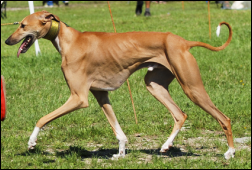
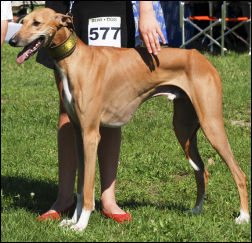




 I have
good answers to all
those questions. What should I bring to the shelter? What can I expect?
I have
good answers to all
those questions. What should I bring to the shelter? What can I expect?